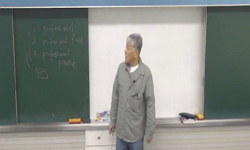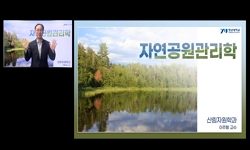Identifying himself with the “builder at work in cities,” Whitman aspires to transform his city into an ideal city. Particularly, his experiences as a journalist inspire him to ameliorate the widespread urban problems in New York. As early as the ...
http://chineseinput.net/에서 pinyin(병음)방식으로 중국어를 변환할 수 있습니다.
변환된 중국어를 복사하여 사용하시면 됩니다.
- 中文 을 입력하시려면 zhongwen을 입력하시고 space를누르시면됩니다.
- 北京 을 입력하시려면 beijing을 입력하시고 space를 누르시면 됩니다.
부가정보
다국어 초록 (Multilingual Abstract)
Identifying himself with the “builder at work in cities,” Whitman aspires to transform his city into an ideal city. Particularly, his experiences as a journalist inspire him to ameliorate the widespread urban problems in New York. As early as the 1840s, Whitman consistently captures the various urban ills and offers reasonable solutions from an urban reformer’s perspective. He also reveals his aspiration to be an urban planner whose primary goal is the use of land and design of the urban environment. His desire to erase the boundaries between nature and civilization distinguishes the poet from his contemporary writers and landscape architects. With the perspective of a “builder” or a “architect,” Whitman strongly advocates more “open places” in the city like a park. Overcoming Frederick Law Olmsted’s dichotomy of the park versus the city, Whitman has an insight into the efficient usage and layout of the “open places” to facilitate the amelioration of the city. Most of all, Whitman’s “great city” represents the cleanly, organic, democratic, ecological and healthy city where technology, human beings and nature have a harmonious relationship. Ultimately, his “great city” like Mannahatta corresponds with the sustainable city in the modern.
다국어 초록 (Multilingual Abstract)
Identifying himself with the “builder at work in cities,” Whitman aspires to transform his city into an ideal city. Particularly, his experiences as a journalist inspire him to ameliorate the widespread urban problems in New York. As early as the ...
Identifying himself with the “builder at work in cities,” Whitman aspires to transform his city into an ideal city. Particularly, his experiences as a journalist inspire him to ameliorate the widespread urban problems in New York. As early as the 1840s, Whitman consistently captures the various urban ills and offers reasonable solutions from an urban reformer’s perspective. He also reveals his aspiration to be an urban planner whose primary goal is the use of land and design of the urban environment. His desire to erase the boundaries between nature and civilization distinguishes the poet from his contemporary writers and landscape architects. With the perspective of a “builder” or a “architect,” Whitman strongly advocates more “open places” in the city like a park. Overcoming Frederick Law Olmsted’s dichotomy of the park versus the city, Whitman has an insight into the efficient usage and layout of the “open places” to facilitate the amelioration of the city. Most of all, Whitman’s “great city” represents the cleanly, organic, democratic, ecological and healthy city where technology, human beings and nature have a harmonious relationship. Ultimately, his “great city” like Mannahatta corresponds with the sustainable city in the modern sense.
참고문헌 (Reference)
1 Traubel, Horace, "With Walt Whitman in Camden. Vol. 3. Reprint" Rowman and Littlefield 1961
2 Reynolds, David. S, "Walt Whitman’s America : A Cultural Biography" Random House 1996
3 Killingsworth, Jimmie M, "Walt Whitman and the Earth: A Study of Ecopoetics" U of Iowa P 2005
4 Thomas, Wynn M, "Walt Whitman and Mannahatta-New York" 34 (34): 362-378, 1982
5 Tyree, J. M, "Thoreau, Whitman, and the Matter of New York" 27 (27): 61-75, 2006
6 Griscom, John H, "The Sanitary Condition of the Laboring Population of New York with Suggestions for Improvement" Harper 1845
7 Whitman, Walt, "The Journalism" Peter Lang 1998
8 Landry, Charles, "The Creative City: A Toolkit For Urban Innovators" Routledge 2008
9 Thoreau, Henry David, "The Correspondence of Henry David Thoreau" New York UP 1958
10 Whitman, Walt, "Specimen Days and Collect" Dover 1995
1 Traubel, Horace, "With Walt Whitman in Camden. Vol. 3. Reprint" Rowman and Littlefield 1961
2 Reynolds, David. S, "Walt Whitman’s America : A Cultural Biography" Random House 1996
3 Killingsworth, Jimmie M, "Walt Whitman and the Earth: A Study of Ecopoetics" U of Iowa P 2005
4 Thomas, Wynn M, "Walt Whitman and Mannahatta-New York" 34 (34): 362-378, 1982
5 Tyree, J. M, "Thoreau, Whitman, and the Matter of New York" 27 (27): 61-75, 2006
6 Griscom, John H, "The Sanitary Condition of the Laboring Population of New York with Suggestions for Improvement" Harper 1845
7 Whitman, Walt, "The Journalism" Peter Lang 1998
8 Landry, Charles, "The Creative City: A Toolkit For Urban Innovators" Routledge 2008
9 Thoreau, Henry David, "The Correspondence of Henry David Thoreau" New York UP 1958
10 Whitman, Walt, "Specimen Days and Collect" Dover 1995
11 Whitman, Walt, "Sculley Bradley and Harold Blodgett" Norton 1973
12 Czerniak, Julia, "Large Parks" Princeton Architectural P 19-34, 2007
13 Holloway, Emory, "I Sit and Look Out: Editorials from the Brooklyn Daily Times by Walt Whitman" Columbia UP 1932
14 Beatley, Timothy, "Green Urbanism: Learning From European Cities" Island P 2000
15 Whitman, Walt, "Emory Holloway. Vol. 1" Kessinger 2006
16 Whitman, Walt, "Democratic Vistas" BiblioBazaar 2009
17 Roche, John F, "Democratic Space: The Ecstatic Geography of Walt Whitman and Frank Lloyd Wright" 6 (6): 16-32, 1988
18 Farland, Maria, "Decomposing City: Walt Whitman’s New York and the Science of Life and Death" 74 : 799-827, 2007
19 Trachtenberg, Alan, "Breaking Bounds: Whitman and American Cultural Studies" Oxford UP 163-173, 1996
20 Katsaros, Laure Goldstein, "A Kaleidoscope in the Midst of the Crowd: Poetry and the City in Walt Whitman’s Leaves of Grass and Charles Baudelaire’s Petits Poēmes en Prose" Yale U 2003
21 Pannapacker, William, "A Companion to Walt Whitman" Blackwell 42-59, 2006
동일학술지(권/호) 다른 논문
-
Experimental Methodologies of Focus Item in Developmental Studies
- 새한영어영문학회
- Kim, Soyoung
- 2015
- KCI등재
-
- 새한영어영문학회
- Yeon, Sookkyung(연숙경)
- 2015
- KCI등재
-
- 새한영어영문학회
- 편집부(편집자)
- 2015
- KCI등재
-
순수의 이면: 샐린저의 『호밀밭의 파수꾼』에 나타난 남성성 추구의 딜레마
- 새한영어영문학회
- 박인찬(Pak, Inchan)
- 2015
- KCI등재
분석정보
인용정보 인용지수 설명보기
학술지 이력
| 연월일 | 이력구분 | 이력상세 | 등재구분 |
|---|---|---|---|
| 2026 | 평가예정 | 재인증평가 신청대상 (재인증) | |
| 2020-01-29 | 학술지명변경 | 외국어명 : The New Korean Journal of English Lnaguage & Literature -> The New Korean Journal of English Language & Literature |  |
| 2020-01-01 | 평가 | 등재학술지 유지 (재인증) |  |
| 2017-04-21 | 학회명변경 | 영문명 : 미등록 -> The New Korean Association of English Language and Literature |  |
| 2017-01-01 | 평가 | 등재학술지 유지 (계속평가) |  |
| 2013-01-01 | 평가 | 등재학술지 유지 (등재유지) |  |
| 2010-01-01 | 평가 | 등재학술지 유지 (등재유지) |  |
| 2008-01-01 | 평가 | 등재학술지 유지 (등재유지) |  |
| 2005-01-01 | 평가 | 등재학술지 선정 (등재후보2차) |  |
| 2004-01-01 | 평가 | 등재후보 1차 PASS (등재후보1차) |  |
| 2003-01-01 | 평가 | 등재후보학술지 선정 (신규평가) |  |
학술지 인용정보
| 기준연도 | WOS-KCI 통합IF(2년) | KCIF(2년) | KCIF(3년) |
|---|---|---|---|
| 2016 | 0.17 | 0.17 | 0.18 |
| KCIF(4년) | KCIF(5년) | 중심성지수(3년) | 즉시성지수 |
| 0.19 | 0.17 | 0.441 | 0.06 |




 KCI
KCI





